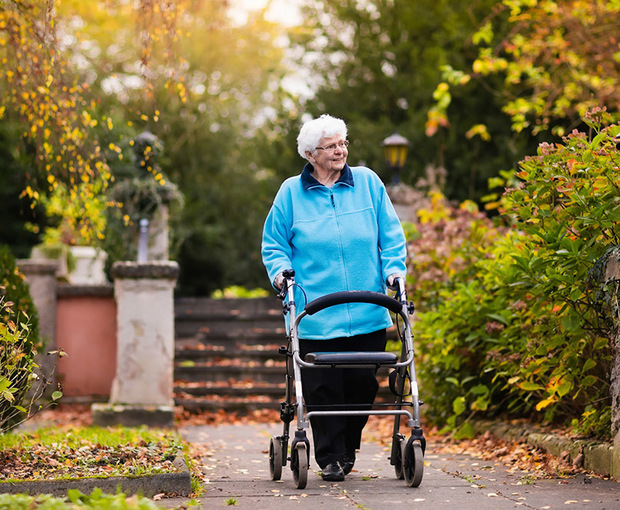
Walk the Walk - with Devices
For most individuals, the probability that an assistive device – such as a cane, a walker or crutches – may be needed seems very unlikely. Walking, and basic movements like getting out of bed, in and out of a car, and climbing up the stairs are some of the things we take for granted. As one gets older, muscles and joints tend to degenerate, resulting in aches and pains.
The fact is, you may need to use a cane/walker or other assistive devices at some point in your life. Age-related pathologies like osteoarthritis or sudden traumatic injuries can lead to difficulty with daily tasks.
Physiotherapy is an important part of the rehabilitation process. Physiotherapists advocate the use of assistive devices as part of their treatment especially when patients experience a decrease in mobility and restricted function.
Assisted walking devices help patients perform daily activities in a pain-free manner, and also improve mobility. Physiotherapists often prescribe such devices following a detailed assessment of the patient's deficits and requirements.
Tips on How to Use Assisted Walking Devices
Here are important tips on how to get the most benefit out of the use of assisted walking devices:
Crutches
Crutches are used by individuals who need stability and support in the lower body. When using crutches, ensure that they are of the right length and they comfortably sit under the armpit. Sufficient upper body strength is important for balance. Your physiotherapist will identify the best walking pattern for you and will train you to use the crutch correctly.
Walkers
Walkers are generally used by individuals with balance impairments. Elderly patients often use walkers to reduce the risk of falls. The key to using a walker is to ensure that it is of the right height and that the patient does not stoop down too much to support himself or herself. Most walkers have an adjustable height option. Some walkers allow adjustments for patients to climb stairs as well. The key is to hold firmly and to lean forward slightly while using a walker.
Canes
A cane also helps individuals struggling with balance. A 'quad cane' has four anchor points and provides a high level of stability. In general, the cane is held on the dominant, stronger arm to support the opposite side, but your physiotherapist will make that determination. A cane is generally used in conjunction with the movement of the opposite affected leg.
Assistive devices serve many purposes and are not restricted to locomotion alone. They assist the individual to perform day-to-day activities in an efficient manner. For example, an assistive device called a grabber helps patients pick up any objects on the floor. In the bathrooms, a grab bar on the wall can be helpful in assisting patients to stand up from a seated position.
We Walk the Walk... With You
The choice of an assistive device is often determined by the physiotherapist following a detailed initial evaluation.
Individuals who demonstrate weakness with one side the body may be prescribed a single point cane. For individuals with weakness in both their lower limbs or those who have suffered from some form of injury, crutches or a walker are generally recommended.
Physiotherapists play an important role in helping patients stay mobile and maintain independence. There is a lot that your physiotherapist can do for you.
With the right treatment approach involving exercise and manual therapy, there is a possibility that you may regain full function without the need for an assistive device. That's how life-changing physiotherapy can be for you. Contact us today to learn more. We look forward to the opportunity to work with you.
Related articles

Elevate Your Game: Shockwave and Laser Therapy for Tennis and Golfer's Elbow

The types of headaches

